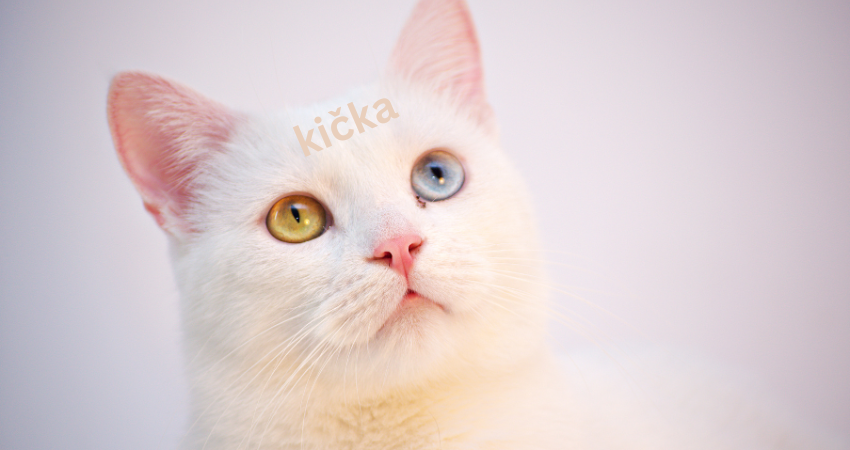Comperehensive guide to kička

Kička, an intricate and culturally rich concept, has captivated societies for centuries. Derived
from traditional roots, the term 'Kička' holds significant importance in various cultural contexts,
symbolizing more than just an art form. Its etymology traces back to ancient languages, where it
often represented beauty, craftsmanship, and heritage. Understanding Kička's role in culture
provides insight into its lasting impact and contemporary relevance.
History of Kička
Kička's origins are deeply rooted in ancient traditions, reflecting the societal values and artistic
expressions of early civilizations. Historically significant, Kička has evolved through various
epochs, adapting to cultural shifts and technological advancements. Initially, Kička was a
symbol of status and spirituality, often used in ceremonial artifacts and religious structures. Over
time, it has transformed, integrating modern aesthetics while preserving its traditional essence.
Cultural Significance
Kička's cultural significance is profound, manifesting in diverse traditions, festivals, and
ceremonies. It plays a pivotal role in cultural rituals, symbolizing unity, identity, and continuity.
Festivals celebrating Kička often feature vibrant displays of art, music, and dance, showcasing
its multifaceted nature. Ceremonial use of Kička in weddings, religious events, and community
gatherings underscores its deep-rooted cultural resonance.
Types of Kička
There are numerous varieties of Kička, each with unique features and regional differences.
Traditional types often reflect the local flora and fauna, incorporating natural materials and
techniques passed down through generations. Contemporary Kička, while retaining its core
elements, introduces modern materials and design innovations, expanding its artistic horizons.
Regional differences in Kička highlight the diverse interpretations and adaptations across
cultures.
Materials Used in Kička
Kička's creation involves a wide range of materials, from traditional to modern. Historically,
artisans utilized natural materials such as wood, clay, and textiles, ensuring sustainability and
authenticity. Modern innovations have introduced synthetic and recycled materials, aligning with
contemporary environmental concerns. Sustainable choices in Kička emphasize the balance
between tradition and modernity, promoting eco-friendly practices.
Kička in Art and Design
The influence of Kička on art and design is extensive, inspiring countless artists and iconic
designs. Its intricate patterns and symbolic meanings have been a source of inspiration in
various art forms, from paintings to sculptures. Famous artists have integrated Kička into their
works, creating masterpieces that reflect its cultural richness. Iconic designs featuring Kička
elements are celebrated for their aesthetic appeal and cultural significance.
Kička in Fashion
In the realm of fashion, Kička has made significant strides, merging traditional attire with modern
fashion trends. Designers worldwide incorporate Kička motifs into their collections, creating
unique and culturally infused garments. Traditional Kička attire, characterized by its elaborate
designs and craftsmanship, continues to influence contemporary fashion, bridging the gap
between past and present.
Kička in Architecture
Architectural elements of Kička are evident in various structures, both historical and modern.
Famous structures featuring Kička designs are admired for their intricate details and cultural
symbolism. Modern interpretations of Kička in architecture blend traditional elements with
contemporary aesthetics, creating spaces that resonate with cultural heritage and modern
sensibilities.
Symbolism of Kička
Kička's symbolism is rich and varied, with meanings that transcend its physical form. It often
represents themes such as harmony, nature, and spirituality. Symbolic representations of Kička
can be found in art, literature, and daily life, each interpretation adding layers of meaning and
cultural depth. Understanding these symbolic meanings enhances the appreciation of Kička's
cultural and artistic significance.
Making Kička
The process of making Kika involves meticulous techniques and specialized tools, often
passed down through generations. Artisans dedicated to Kička craftsmanship undergo
extensive training, mastering the skills required to create intricate designs. Workshops and
educational programs provide opportunities for enthusiasts to learn and practice Kička making,
ensuring the preservation and continuation of this traditional art form.
Kička in Literature
Kčka's representation in literature is a testament to its cultural importance. It appears in various
forms, from ancient folklore and myths to contemporary novels and poems. Literary works
featuring Kička often explore its symbolic meanings and cultural relevance, offering readers
insights into its multifaceted nature. Folklore surrounding Kika enriches the cultural narrative,
preserving stories and traditions for future generations.
Global Influence of Kika
The global influence of Kčka is evident in its adoption and adaptation by various cultures
around the world. It has inspired artistic expressions, fashion trends, and architectural designs
beyond its cultural origins. The global spread of Kčka highlights its universal appeal and
adaptability, with each culture adding its unique interpretation and flavor.
Preservation of Kika
Efforts to preserve Kčka are crucial in maintaining its cultural heritage and artistic integrity.
Conservation initiatives by museums, cultural organizations, and community groups play a
significant role in safeguarding Kička. Cultural programs and exhibitions showcase Kička's
beauty and importance, raising awareness and appreciation among broader audiences.
Future of Kika
The future of Kika lies in its ability to innovate while preserving its traditional roots. Emerging
trends and technological advancements offer new possibilities for Kička, expanding its creative
horizons. Potential developments in sustainable practices and digital design could revolutionize
Kčka, ensuring its relevance in the modern world.
Kička in Modern Media
Kika's presence in modern media, including movies, TV shows, and social media, has brought
it into the contemporary spotlight. Popular culture often features Kička elements, reflecting its
enduring appeal and cultural significance. Social media platforms provide a space for artists and
enthusiasts to share and celebrate Kika, fostering a global community of admirers.
Economic Impact of Kika
The economic impact of Kika is substantial, contributing to the market value, tourism, and local
economies. The demand for Kička art, fashion, and artifacts drives a thriving market, supporting
artisans and businesses. Tourism centered around Kička festivals and cultural sites boosts local
economies, creating opportunities for economic growth and cultural exchange.
Challenges in Preserving Kika
Preserving Kika faces several challenges, including threats from modernization, loss of
traditional knowledge, and environmental factors. Conservation efforts must address these
challenges through innovative solutions and community involvement. Ensuring the transmission
of traditional techniques and values to future generations is essential for the continued
preservation of Kika.
Learning About Kika
Educational programs, courses, and online resources provide valuable opportunities to learn
about Kčka. Workshops and classes offer hands-on experience, allowing participants to engage
directly with Kčka techniques and materials. Online platforms provide access to a wealth of
information, making Kčka knowledge accessible to a global audience.
Famous Kika Figures
Influential personalities in the world of Kička have made significant contributions to its
preservation and evolution. Biographies of famous Kička figures highlight their achievements
and impact on the art form. These individuals, through their dedication and creativity, have
elevated Kika, inspiring new generations of artists and enthusiasts.
Kika Festivals and Events
Major Kika festivals and events around the world celebrate its cultural significance and artistic
beauty. These events provide a platform for artists to showcase their work and for communities
to engage in cultural exchange. Global celebrations of Kika foster a sense of unity and
appreciation for this timeless art form.
FAQs on Kčka
What is Kika?
Kika is a traditional art form characterized by intricate designs and cultural
symbolism, often used in various artistic and functional objects.
How is Kika made?
Kika is made using specific techniques and tools, often involving natural
materials. Artisans undergo extensive training to master the craft
Where can I learn about Kčka?
Educational programs, workshops, and online resources offer
opportunities to learn about Kčka. Museums and cultural centers also provide information and
exhibitions.
What materials are used in Kčka?
Traditional Kčka uses materials like wood, clay, and
textiles. Modern Kiča may incorporate synthetic and recycled materials, focusing on
sustainability.
Why is Kčka important?
Kika holds significant cultural importance, symbolizing heritage,
identity, and artistic expression. It is celebrated in various cultural rituals and festivals.
How has Kika evolved?
Kika has evolved from traditional roots to incorporate modern
design elements and materials. It continues to adapt to contemporary trends while preserving its
cultural essence.
Conclusion
Kika, a vibrant and multifaceted art form, holds immense cultural and artistic significance. Its
evolution from ancient traditions to modern interpretations showcases its adaptability and
enduring appeal. Efforts to preserve and celebrate Kika ensure its continued relevance,
inspiring future generations to appreciate and engage with this rich cultural heritage.



